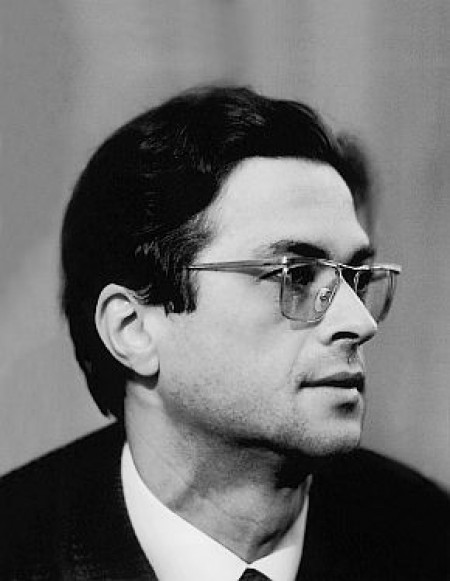
10 April 1934, Szeged – 2 April 1997, Budapest
Zsolt Durkó was a student at the Budapest Music Academy between 1955 and 1961, and taught twentieth century composition there from 1971 to 1977. But even beyond these two short periods, many other important events in his life are connected with the Music Academy building. Several of his most important compositions, defining his life's work, were performed here for the first time: the Second String Quartet (1971), which won a Budapest international competition, the Halotti Beszéd (Funeral Oration) (1975), commissioned for the centenary of the Hungarian capital, the Violin Concerto (1981), and it was here that his fist large-scale composer's evening was held in the packed Great Hall, as well as the last one, (1994), celebrating his birthday.
Zsolt Durkó graduated in Ferenc Farkas' class at the Music Academy, and then continued his studies in Goffredo Petrassi's master course at the Santa Cecilia Academy in Rome. His two years in Italy fundamentally determined the main directions of his career. On his return, he created his personal musical language, one that was uniform for the whole of his life's work, was at the same time European and Hungarian, and found connections with the tradition and the new endeavours of the age alike. The score of the Hungarian Rhapsody of the sixties, of the Altamira, or the Fioriture, has references to the avant garde endeavours of the times, just as much as to the relationships of stresses in the Hungarian language, the free articulation and decorations of the funeral laments of Hungarian folk music, or the Gregorian chants and the musical material of the codices of the Middle Ages. Not only the characteristic theme types (the psicogramma, the organismo, the double) are born at that time, not only the then revolutionary instrumentation of the musical texture, the alternation of the restricted and unrestricted modes of performance, but already there is the development of the characteristic organising principle of the of the organic large form compiled from micro elements. And then follows the ever more organic relationship between melody and harmony, and the development of the structure based on interval models, as the beginning of the composer's new stylistic period.
The successive compositions keep winning plaudits, both at international competitions (Rome, Montreal, Budapest, Paris), and in the concert halls, from London to Warsaw, and from the festivals at home to those in Australia. By the second half of the sixties, Zsolt Durkó became the contemporary Hungarian composer most often performed abroad.
The vocal works came into the focus of his life's work in the seventies. Following the earlier vocal themes without words, there was a fundamental change: Durkó turned to texts. The two cantatas, the two oratorios, and the Moses opera in three acts frame lines from Hungarian literature: Ady, the ancient Funeral Oration, Madách and the thoughts of Széchenyi. He re-formulated in the language of dramatic music the characteristics of the earlier instrumental style: till then the largely variational, contrapunctual forms moved from the small units towards a large one – whereas now the musical material was organised into a monumental architecture with a broad sweep.
Zsolt Durkó was awarded the Koussevitzky Prize in 1971, and the Kosssuth Prize in 1978. Later on he twice received the Béla Bartók-Ditta Pásztory Prize in recognition of his art. From the eighties he was musical editor at Hungarian Radio, from 1987 the founding chairman of the Hungarian Music Society, who created the outstanding event of contemporary music, the Mini-festival. At the turn of the eighties-nineties, he was the determining figure in changing Hungarian musical life, a full member of the Hungarian Academy of Science and of the Széchenyi Academy of the Arts, and chairman of the World Federation of Hungarian Musicians and Dancers. And a further role: in this period he often appeared as the inspired performer of his piano own works.
The nineties were on the one hand a time of summing up, and on the other they also suggest the possibility of renewal: in particular in his handling of the instruments, the relaxation of his rhythms, and his world of harmonies, which is perhaps more illuminated than ever before. A few large-scale works represent this period: the cycle, 60 piano pieces, suggesting the ideal of a rounded wholeness, A gömb története (History of the sphere), dynamically taut, in four movements, the music of hopeless hope, the Three English songs, and the last oratorio composed on the margin of the Book of Revelation, in which the drama of the Apocalypse is resolved in the music of the eternal, a vision of a radiant glass sea. It was performed for the first time posthumously, in June 1997, in the Great Hall of the Music Academy.
R. G.


